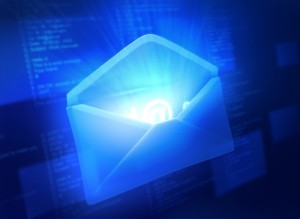 Email marketing is a powerful yet cost-effective marketing tool, making it a popular choice for marketers looking to generate sales leads and connect with customers. However, many companies still don’t understand the complexities of running a successful campaign and often end up with poor results or even being identified as a spammer.
Email marketing is a powerful yet cost-effective marketing tool, making it a popular choice for marketers looking to generate sales leads and connect with customers. However, many companies still don’t understand the complexities of running a successful campaign and often end up with poor results or even being identified as a spammer.
Insight Data’s email marketing manager, Craig Bowler, shares his top tips for navigating the world of email marketing and getting the maximum response from your campaigns:
1. Use specialist email marketing software
To avoid blacklisting your regular email communications, create a separate domain for email marketing and tie this to dedicated email marketing software. Using standard software (such as Microsoft Outlook) is not recommended and may flag your campaign as spam. Email software with built-in testing that enables you to spam score your email will further improve results.
2. Design your campaign for the user
Unlike direct mail, you only have a few seconds to engage with a recipient by email. The subject line, headline copy and design of your email are all key to a successful campaign so they need to be attention grabbing. Image-only emails are not recommended as many email clients (such as Outlook and Hotmail) block images.
3. Have a clear response strategy
What do you want people to do when they receive your email? Be clear on what your aims are and incorporate this within the campaign. If the recipient is interested enough to respond, it is worth investing in a specific landing zone or micro-site. Simply pointing them to your website home page with no relevance to the campaign will dramatically reduce your results.
4. Tracking and analysis
One of the benefits of email marketing is tracking. In-depth analysis and tracking means you’ll know who opened the campaign and what landing zones they clicked through to, enabling you to build up visitor and potential customer profiles. Using this data enables you to effectively manage follow-up campaigns, tailoring specific offers or products depending on initial recipient responses.
5. Use accurate email data
You will always get a percentage of email bounces on your campaign, but hard bounces (permanently unavailable or incorrect emails) should be removed from your list and updated.
Sending a campaign to an out-of-date or inaccurate email list can result in blacklisting with your campaign flagged as spam. Sourcing accurate, fresh email data and updating it regularly will boost the success of your campaign dramatically.







